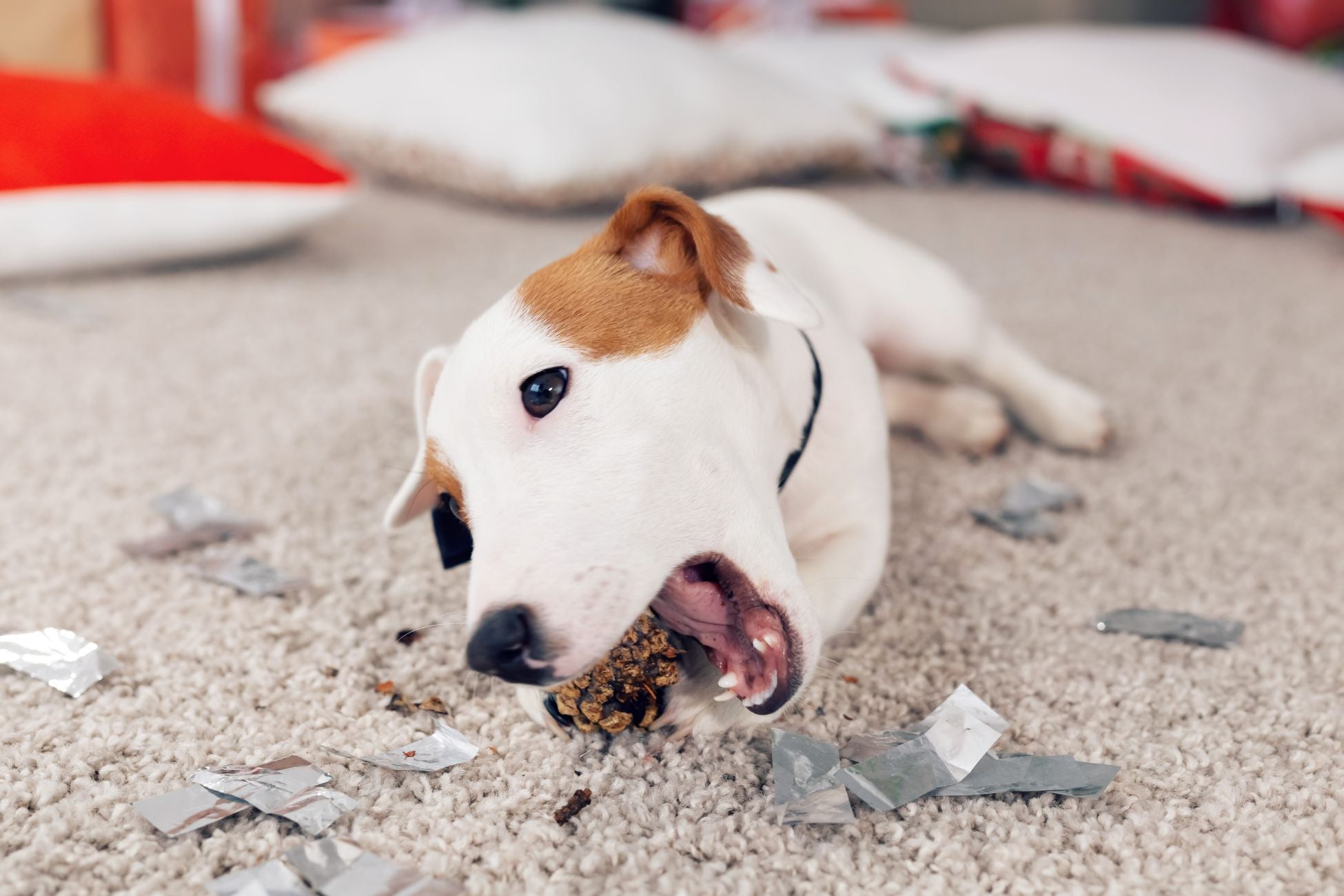
- by Dr.Thilo Senst
How to Manage Separation Anxiety in Dogs: A Complete Guide
- by Dr.Thilo Senst
Separation anxiety in dogs is a challenging condition that many pet owners face, particularly after changes in routine or circumstances, such as returning to work after long periods at home. Dogs are naturally social animals, and when they are left alone for extended periods, they can experience heightened anxiety, resulting in destructive behaviour, excessive barking, and even physical symptoms such as digestive issues.
In this comprehensive guide, we'll explore how to manage dog anxiety, focusing specifically on separation anxiety. Using scientifically-backed strategies and effective calming techniques, we’ll offer practical advice to help both you and your dog cope. Whether your dog’s anxiety is mild or severe, this guide will provide you with actionable steps to improve their well-being.
Separation anxiety in dogs refers to the distress that a dog experiences when left alone. This anxiety can manifest in a range of behaviours, from excessive barking and howling to destructive chewing and attempts to escape.
Dog anxiety due to separation is not simply a case of bad behaviour. It is a serious condition that can impact your dog's health and happiness, often linked to how dogs form attachments to their owners and how they react when those owners leave.
Recognising the signs of separation anxiety is crucial for determining how severe your dog’s condition is and how best to treat it. Common symptoms include:
If you notice these symptoms, your dog may be suffering from anxiety, particularly if they only occur when your dog is alone.
Several factors can lead to or exacerbate dog anxiety, particularly separation anxiety:
If your dog is used to constant companionship but suddenly finds themselves alone for extended periods (for example, when an owner returns to work), this abrupt change can trigger anxiety.
Dogs that have been adopted from shelters may be more prone to separation anxiety due to past experiences of abandonment or frequent changes in their environment.
Dogs that haven’t been exposed to a variety of people, pets, and environments during their formative years may struggle with anxiety when they are left alone.
Certain breeds are more prone to anxiety than others. Breeds that have a strong attachment to their owners, such as Border Collies, German Shepherds, and Golden Retrievers, are more likely to suffer from separation anxiety.
One of the most effective ways to manage separation anxiety is through gradual desensitisation. This involves slowly increasing the amount of time your dog spends alone in a way that helps them feel more comfortable.
Steps for Desensitisation:
Your dog’s environment plays a significant role in how they manage anxiety. Creating a calming, safe space for your dog when you’re away can significantly reduce their stress.
Pro Tip: The Dr. Senst Dog Calming Hemp Oil for Dogs is an excellent natural option for promoting calmness, helping dogs manage separation anxiety.
A tired dog is a calm dog. Ensure that your dog is getting plenty of exercise and mental stimulation throughout the day. Regular walks, playtime, and interactive toys can help release pent-up energy and keep your dog engaged, reducing anxiety.
Encouraging your dog to be independent is essential for managing separation anxiety. Start by creating small separations when you're home, such as having them stay in another room while you work or relax. Gradually increase the time they spend away from you to help them feel more confident when you’re not around.
Dogs thrive on routine, and consistent daily schedules can provide them with a sense of security. Try to feed, walk, and engage with your dog at the same times every day, so they know what to expect and feel more settled.
Taking proactive steps to manage your dog's separation anxiety comes with many benefits for both you and your pet:
While separation anxiety can be managed and significantly reduced, some dogs may always experience a degree of anxiety. With consistent effort, however, most dogs can lead happy, anxiety-free lives.
The timeline for improvement varies depending on the dog and the severity of the anxiety. Some dogs show improvement within a few weeks, while others may take months of gradual desensitisation and treatment.
Improvement can be seen in reduced destructive behaviour, less barking or whining, and a calmer demeanour when left alone.
In severe cases, medication may be recommended by your vet. However, natural remedies such as Dr. Senst Dog Calming Treats and gradual desensitisation should be tried first.
In addition to behavioural strategies, many dog owners find that natural supplements and remedies can be highly effective in reducing dog anxiety. Products such as the Dr. Senst Dog Calming Hemp Oil and Dr. Senst Dog Calming Treats are formulated to provide calming effects without the need for prescription medications.
Separation anxiety in dogs is a serious but manageable condition. By implementing gradual desensitisation techniques, creating a calming environment, and using natural supplements such as Dr. Senst Dog Calming Hemp Oil, you can help your dog feel more secure and reduce the stress they experience when you're away.
Addressing dog anxiety with a proactive approach not only improves your dog’s well-being but also strengthens the bond you share with them. Consistency, patience, and the right tools will make a world of difference in managing your dog's separation anxiety.
![]()
Enter your details & download our comprehensive 50+ page printable Dr. Senst Pet Care Planner completley FREE! - keep track of all your pet’s needs, from medical history and training to vet visits, grooming, diet, and more!










Share:
How to Treat Dog Ear Mites at Home: A Step-by-Step Guide
Can Stress Cause Skin Issues in Cats? Managing Itching